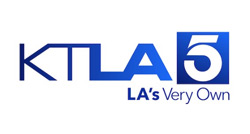
 Several crimes set forth in Federal Criminal Code can apply to tax matters, including aiding and abetting, presenting false, fictitious, or fraudulent claim to government, conspiracy, making false statements to U.S. agency, mail fraud, bribery, and forgery.
Several crimes set forth in Federal Criminal Code can apply to tax matters, including aiding and abetting, presenting false, fictitious, or fraudulent claim to government, conspiracy, making false statements to U.S. agency, mail fraud, bribery, and forgery.
AIDING AND ABETTING COMMISSION OF FEDERAL CRIMINAL CODE OFFENSE
In practice, the aiding and abetting charge is most often used to prosecute tax protesters. It has also been charged against persons who have aided and assisted another in tax evasion by concealing another person’s sources of income or assets. It has also been applied to officers of corporations who caused their respective corporation to fail to collect and pay over trust fund taxes.
ELEMENTS OF OFFENSE
To prevail in bringing a charge under the federal aiding and abetting statute, the government must prove beyond a reasonable doubt that:
- A substantive criminal offense was committed
- The defendant, by affirmative conduct, participated in, counseled, or assisted in the commission of the substantive offense
- The defendant shared with the principal the criminal intent to commit the substantive offense.
Any person who aids or abets the commission of a substantive federal offense is punishable as a principal in the underlying substantive federal offense. The principal who was aided and abetted does not need to be identified or convicted for the government to convict the party accused of aiding and abetting. Moreover, an outright acquittal of the principal will not bar the prosecution of the aider and abettor.
An accused must associate themselves in some manner with a criminal venture to be convicted of aiding and abetting the commission of an offense. Additionally they must participate in the criminal venture in a manner that demonstrates that it is something that they wish to bring about and seek by their actions to make succeed. However, the aider and abettor need not perform the substantive offense nor even know its details to be convicted. Moreover, the aider and abettor need not have been present when the offense was committed. To prevail in bringing an action for aiding and abetting, the government need only show that the defendant intentionally assisted in the commission of a specific crime in some substantial manor. For example, convictions for aiding and abetting have been secured against individuals who advised others to file false Forms W-4, Employee’s Withholding Allowance Certificate.
Because the aiding and abetting statute does not create a separate offense the applicable statute of limitations for bringing a aiding and abetting charge is the same as for the underlying substantive crime involved.
FALSE, FICTITIOUS, OR FRAUDULENT CLAIMS
It is chargeable as a felony to present to the government a false, fictitious, or fraudulent claim, which commonly arises where a taxpayer submits a false claim for refund of taxes. This crime is punishable by imprisonment of up to five years, a fine of up to $10,000, or both.
This statute has been applied to:
- a defendant who filed an income tax return falsely claiming a refund based on backdated documents
- a defendant who filed duplicate returns, one in his name and one in a fictitious name
- a defendant who filed returns claiming refunds in the names of other persons but using his own address
ELEMENTS OF THE OFFENSE
For the government to earn a conviction for the presentation of a false claim, it must prove beyond a reasonable doubt that:
- The defendant made or presented a claim for money or property to a department or agency of the United States Government;
- The claim was false, fictitious, or fraudulent
- The defendant knew that the claim was false, fictitious, or fraudulent at the time presented.
The statute of limitations for prosecution for making a false claim to the government is five years.
CONSPIRACY
It is a felony to conspire against the United States. Conspiracy is defined as an agreement by two or more people to commit an offense against, or to defraud, the United States. Conspiracy is chargeable as a felony or a misdemeanor depending on whether the underlying criminal objective of the conspiracy is punishable as a felony or as a misdemeanor. If the underlying criminal objective of the conspiracy is a felony, conviction for conspiracy is punishable by imprisonment for up to five years and a fine of up to $10,000. If the underlying criminal objective of the conspiracy is punishable as a misdemeanor, conviction for conspiracy is punishable to the same extent as is the underlying misdemeanor criminal objective. In both felony and misdemeanor cases, greater fines may be imposed under the alternative maximum fine provisions.
The conspiracy statute defines two distinct offenses:
A conspiracy to:
(1) commit an offense against the United States; and
(2) defraud the United States.
Case law in this area shows the charges for conspiracy to defraud the United States have been use to attack agreements to impede, impair, obstruct, or defeat the lawful functions of governmental agencies such as the IRS. The IRS has used conspiracy charges surrounding attempts to impede and or impair the IRS in the lawful assessment or collection of revenue as a weapon in complex tax prosecutions typically involving corporations, abusive tax shelters and money-laundering schemes.
ELEMENTS OF THE OFFENSE
For the government to earn a conviction for conspiracy it must prove beyond a reasonable doubt that:
- Two or more persons made an agreement
- The substance of the agreement was to commit an offense against the United States or to defraud the United States
- One or more of the conspirators committed an overt act in furtherance of the agreement.
A six-year statute of limitations applies to offenses arising under the conspiracy provisions of the Federal Code.
AGREEMENT BETWEEN TWO OR MORE PERSONS
The agreement to violate the law does not have to be reduced to an express or formal agreement. Convictions have occurred where nothing more than a mere tacit understanding was able to be inferred from the apparent concert of action by two or more persons which evidenced a single design to accomplish a common criminal purpose. However, evidence presented by the government must be sufficient to show beyond a reasonable doubt that the conspirators had reached a mutual understanding involving the essential nature of the criminal plan. In the Tax arena for example, all that must be shown in a conspiracy to evade taxes case, is that the defendant knew of the conspiracy to evade taxes and knowingly participated in it. Moreover, the government is not required to establish that the conspirators agreed to the details of the plan for which the conviction was charged.
A corporation as a legal person can also be charged with conspiracy. Courts have held that a corporation may conspire with its officers or with its employees. Husband and Wife may also be found guilty of conspiring together against the United States.
The underlying substantive offense and the conspiracy to commit that offense are two separate and distinct offenses. Thus a person may be charged with both the commission of the underlying offense and with conspiracy to commit the underlying offense. Moreover, a conspiracy to commit an offense may be established even when the underlying substantive offense was not actually accomplished.
CONTACT AN IRVINE CRIMINAL TAX ATTORNEY
Contact me, an Orange County, Irvine, Los Angeles County and Westwood criminal tax audit lawyer, to schedule your reduced rate initial consultation today.












